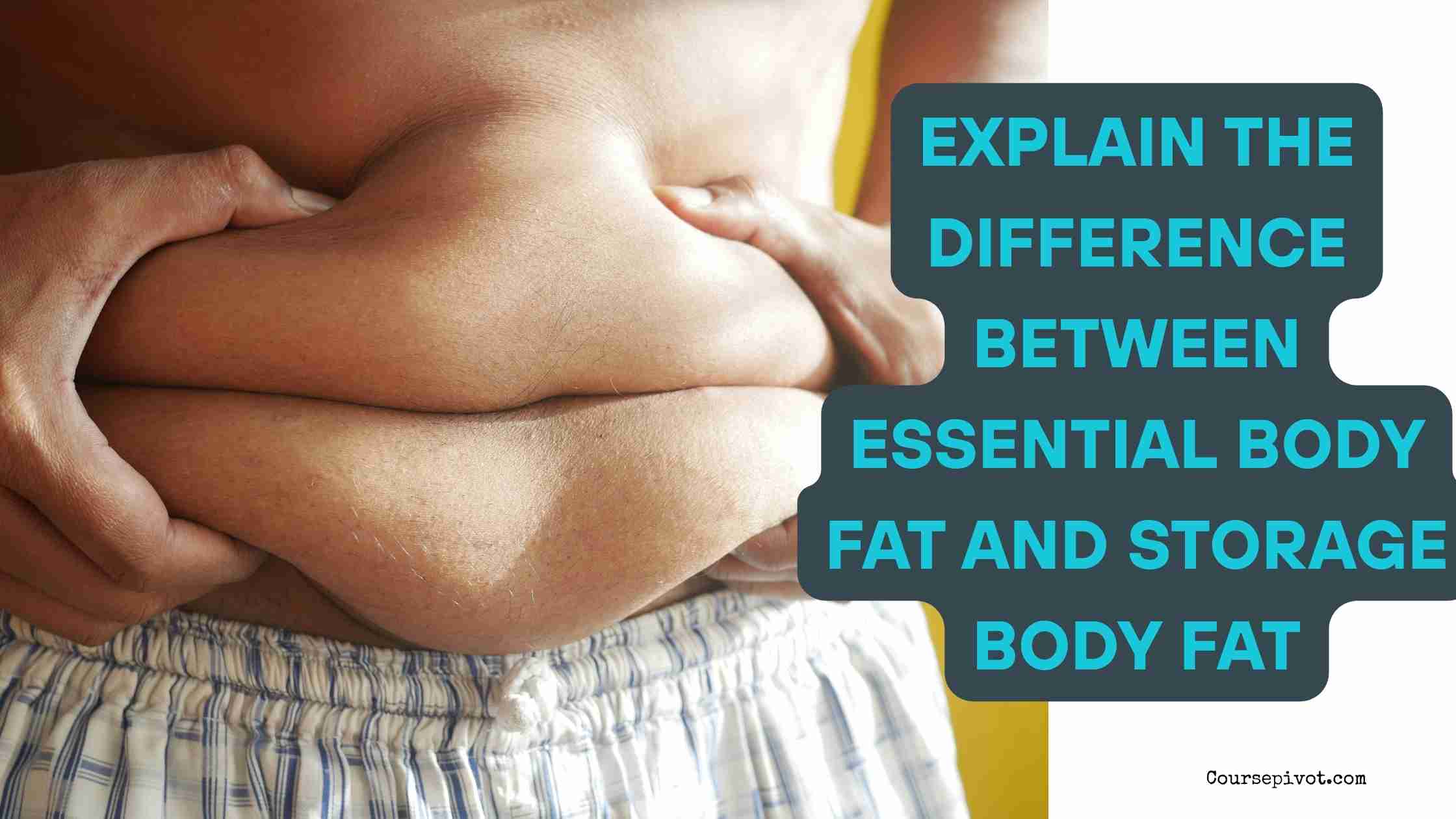
Explain the Difference Between Essential Body Fat and Storage Body Fat
Understanding your body is the first step toward taking control of your health. One topic that often confuses many people is body fat—especially when it comes to distinguishing between essential body fat and storage body fat.
If you’ve ever asked yourself, “Why do I need fat in my body at all?” or “Is all fat bad?”—you’re not alone. The truth is, not all fat is created equal. Some of it keeps you alive. Some of it weighs you down. So, what’s the real difference between the two?
Table of Contents
Let’s break it down clearly and thoroughly.
What Is Essential Body Fat?
Essential body fat is just what it sounds like—essential. It’s the minimum amount of fat your body needs to function properly.
🧠 Why is it called essential?
Because without it, your organs would struggle, your hormones would crash, and your body would literally begin to shut down. Essential fat is found in places like:
- Bone marrow
- Internal organs (like kidneys and liver)
- The nervous system
- Cellular membranes
- Reproductive organs (especially in women)
🔬 What does essential fat do?
It:
- Protects organs by cushioning them from impact
- Regulates hormones, especially sex hormones like estrogen and testosterone
- Supports brain function and nerve activity
- Helps with temperature regulation
- Assists with vitamin absorption, especially fat-soluble vitamins like A, D, E, and K
Think of essential body fat as the behind-the-scenes worker that keeps your body running smoothly.
Read our blog on Why Participating in Individual Sports Requires Good Mental Focus
What Is Storage Body Fat?
Now, let’s talk about the kind of fat most people think about when they hear the word “fat”: storage body fat.
Storage fat is the fat your body stores for future energy use. It’s also the fat that builds up when you consume more calories than you burn.
⚖️ Where is storage fat found?
- Beneath the skin (called subcutaneous fat)
- Around the abdomen (visceral fat)
- On thighs, arms, back, and buttocks
- In fat cells that expand as you gain weight
🛠️ What does storage fat do?
It:
- Acts as energy reserve for times of calorie deficit
- Insulates the body, helping maintain core temperature
- Protects organs, though excessive visceral fat does the opposite
- Can contribute to health problems when accumulated excessively
Unlike essential body fat, storage fat is not necessary in large amounts. Too much of it, especially around your abdomen, increases the risk of heart disease, diabetes, and other chronic conditions.
The Key Differences Between Essential and Storage Fat
Let’s highlight the core differences in a simple breakdown:
| Essential Body Fat | Storage Body Fat |
|---|---|
| Crucial for survival | Extra, used for energy |
| Found in organs, nerves, marrow | Found under skin and around organs |
| Aids in hormone and brain function | Insulates and stores energy |
| Small, regulated amounts | Can accumulate excessively |
| Needed by everyone, especially women | Not always beneficial in excess |
How Much Fat Do You Really Need?
This varies by gender and genetics, but here’s a basic guideline:
- Men: Essential fat ~3-5% of total body weight
- Women: Essential fat ~10-13% of total body weight
- Healthy total fat:
- Men: 10–20%
- Women: 20–30%
Why the gender difference? Because women need more fat to support reproductive health, pregnancy, and hormonal balance.
Can You Lose Essential Fat?
Yes—and that’s dangerous.
Extreme dieting, overtraining, or eating disorders can cause the body to dip below its essential fat threshold. When that happens:
- Hormones crash
- Menstrual cycles stop (in women)
- Energy levels plummet
- Immunity weakens
- Organ function is compromised
Losing storage fat is healthy when done responsibly. Losing essential body fat is not.
How Do You Measure Your Body Fat?
There are several ways, though not all are equally accurate:
- DEXA scans: Very accurate but costly
- Hydrostatic weighing: Accurate, but not widely available
- Body calipers: Affordable but technique-sensitive
- Bioelectrical impedance: Convenient, though less precise
Regardless of the method, it’s helpful to know your total body fat percentage—but more importantly, how much of that is essential versus storage.
What to note
Many people think all body fat is bad, but that’s far from true. Some of it is literally keeping you alive.
When you understand the difference between essential body fat and storage body fat, you shift your mindset from “fat is bad” to “balance is key.”
So, what’s the difference between essential fat and storage body fat?
Essential fat is necessary for your body to survive and function. Storage fat is extra—some is useful, but too much can be harmful. Knowing the difference helps you make smarter choices about your health, nutrition, and fitness goals.
And that’s not just knowledge—it’s power.
Cite this article
You can copy and paste your preferred citation format below.
Martin, L. & Arquette, E.. (2025, May 23). Explain the Difference Between Essential Body Fat and Storage Body Fat. Coursepivot.com. https://coursepivot.com/blog/explain-the-difference-between-essential-body-fat-and-storage-body-fat/


